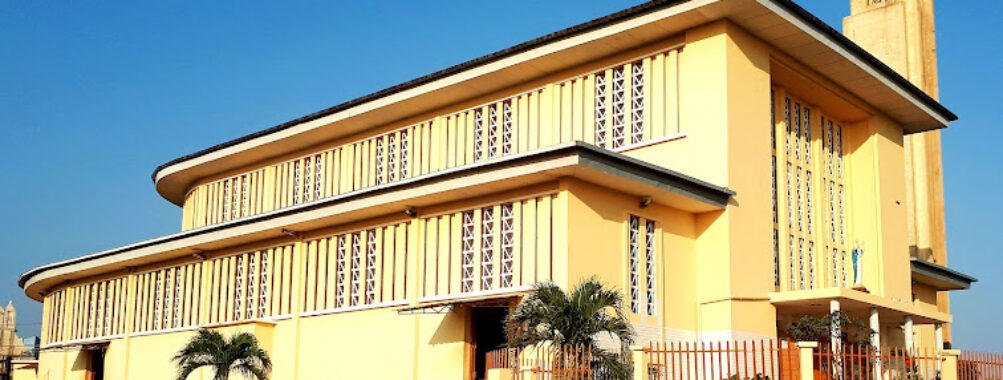
Cathédrale Sainte Marie
Table of Contents The Cathédrale Sainte-Marie in Libreville stands as one of Gabon’s most enduring landmarks — a place where history, faith, and architecture come together in a way that feels both grounding and quietly awe-inspiring. It’s not the kind of cathedral that shouts for attention with gold or grandeur; instead, it draws you in with its calm dignity and the sense that countless stories have unfolded within its walls. I still remember my first visit — the air was warm and heavy with the scent of incense, and the sunlight poured through the stained glass in that way that makes you stop mid-step just to take it all in. There’s something deeply human about this place, a feeling that transcends religion or background. The cathedral has a fascinating mix of styles, reflecting the evolution of Gabon’s cultural and spiritual life over the years. It’s a Catholic church, yes, but it also feels like a community hub — the kind of place where people come not only to pray but to pause, reflect, and reconnect. The façade, though simple at first glance, reveals intricate details the longer you look: carved motifs, arched windows, and a sense of proportion that feels both humble and grand. Inside, the high ceilings and soft acoustics create a space that seems to absorb the noise of the outside world. You can almost hear the echoes of choirs that must have sung here decades ago. Accessibility is another thing worth noting. The church has made real efforts to welcome everyone, with wheelchair-accessible entrances and parking areas, as well as clean restrooms — not always a given in older religious sites. It’s clear that the cathedral’s caretakers take pride in maintaining both its spiritual and physical integrity. And while some visitors might find the exterior less ornate compared to European cathedrals, others appreciate its understated charm and authenticity. It’s a place that doesn’t try too hard — it simply is, and that’s part of its beauty. One thing I love about the Cathédrale Sainte-Marie is that it manages to feel both sacred and approachable. You don’t have to be religious to feel moved here. I’ve seen tourists quietly sitting in the pews, lost in thought, and locals lighting candles with quiet reverence. It’s that mix of personal and collective experience that gives the cathedral its soul. If you’re planning to visit, timing can make a big difference. Libreville’s tropical climate means it’s warm year-round, but the dry season — roughly from June to September — is the most comfortable for sightseeing. The humidity drops a little, and the skies stay clear enough for photos that really capture the cathedral’s soft tones and architectural lines. I’d also recommend visiting in the morning, when the light filters through the stained glass at just the right angle. The colors shift from deep reds to golden hues, and for a few minutes, the whole interior seems to glow. For those interested in experiencing local culture, attending a Sunday mass can be an unforgettable experience. The music, often accompanied by rhythmic drumming and heartfelt singing, adds a distinctly African touch to the traditional Catholic liturgy. Even if you don’t understand the language, the emotion in the voices speaks volumes. Just remember to dress modestly — it’s still a place of worship, after all. Reaching the Cathédrale Sainte-Marie is relatively straightforward, especially if you’re staying in central Libreville. Most taxis know the location well — just mention the cathedral, and you’ll likely get a nod of recognition. If you prefer a bit more independence, you can rent a car, though driving in Libreville can be a bit of an adventure if you’re not used to the local traffic rhythm. Public transport options are available, but they can be unpredictable, so a taxi or private driver tends to be the easiest route. Once you arrive, you’ll notice that the cathedral stands slightly elevated compared to the surrounding streets. This small rise gives it a quiet prominence, as if it’s watching over the city below. Parking is generally available nearby, and the area feels safe during the day. I’d still suggest visiting before dusk, not just for safety but because the late afternoon light adds a soft golden tint to the cathedral’s exterior — a photographer’s dream, honestly. Visiting the Cathédrale Sainte-Marie isn’t just about ticking off a landmark; it’s about slowing down and letting the atmosphere sink in. Here are a few tips I’ve picked up from my own visits and from chatting with locals: And here’s a small personal note — don’t rush. I once spent nearly an hour just sitting on one of the benches outside, watching people come and go. There were kids chasing each other, an elderly woman selling small religious trinkets, and a young couple taking wedding photos. It reminded me that places like this aren’t just monuments; they’re living parts of the community. Every person who passes through adds another layer to its story. For travelers who enjoy architecture, photography, or simply quiet moments of reflection, the Cathédrale Sainte-Marie offers something rare — a sense of peace that feels earned, not manufactured. It’s not the most polished or the most famous cathedral in the world, but maybe that’s the point. It’s real, it’s human, and it’s deeply woven into the fabric of Libreville’s identity. So if you find yourself in Gabon, take a little detour to this cathedral. Step inside, take a breath, and let the stillness wash over you. You might just walk out feeling a little lighter than when you came in.Description
Key Features
Best Time to Visit
How to Get There
Tips for Visiting
Location
Places to Stay Near Cathédrale Sainte Marie
Find and Book a Tour
Explore More Travel Guides
No reviews found! Be the first to review!